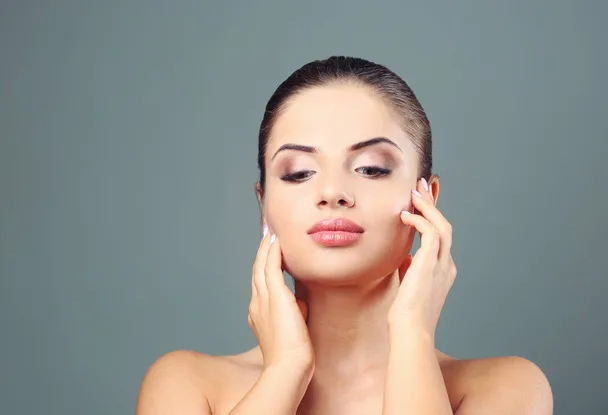The Benefits of Yoga:
Yoga is not merely a form of exercise but a holistic practice that addresses the well-being of the entire individual – mind, body, and spirit. Originating in ancient India thousands of years ago, yoga has transcended cultural boundaries and gained widespread recognition for its multifaceted benefits. At its core, yoga seeks to create harmony and balance within the individual, fostering a deep connection between the physical body, breath, and consciousness.
Physically, yoga offers a myriad of benefits that contribute to overall health and vitality. The practice of yoga involves performing a series of postures, known as asanas, which are designed to stretch, strengthen, and tone different muscle groups throughout the body. Through consistent practice, yoga can improve muscle tone, increase flexibility, and enhance overall physical endurance. Additionally, the deliberate movements and sequences of yoga asanas stimulate circulation and promote lymphatic drainage, aiding in the detoxification process and supporting the body’s natural ability to eliminate toxins.
Beyond its physical aspects, yoga serves as a powerful tool for cultivating mental and emotional well-being. Central to the practice of yoga are mindfulness and awareness, which are cultivated through techniques such as mindful breathing (pranayama) and meditation. These practices help to quiet the mind, reduce stress, and promote a sense of inner peace and tranquility. By bringing attention to the present moment and fostering a state of deep relaxation, yoga can alleviate symptoms of anxiety, depression, and chronic stress, leading to improved overall mental health and emotional resilience.
Moreover, the benefits of yoga extend beyond the individual to impact various aspects of daily life. As individuals become more attuned to their bodies and minds through yoga practice, they often develop healthier lifestyle habits, such as improved dietary choices, better sleep patterns, and enhanced self-care practices. Yoga fosters a sense of connection and unity with oneself and others, promoting compassion, empathy, and a greater sense of community.
In the context of skincare and beauty, the holistic benefits of yoga are particularly notable. By reducing stress and promoting relaxation, yoga indirectly contributes to improved skin health by minimizing inflammation, balancing hormone levels, and supporting the body’s natural healing processes. Furthermore, the physical movements and stretches of yoga asanas stimulate blood flow and lymphatic circulation, resulting in a healthy, radiant complexion from within.
The Power of Pilates:
Pilates, a system of exercise developed by Joseph Pilates in the early 20th century, has emerged as a powerful practice for enhancing physical strength, flexibility, and overall well-being. Unlike yoga, which incorporates spiritual elements, Pilates focuses primarily on physical conditioning, with a particular emphasis on core strength, alignment, and control. Through a series of precise movements and exercises, Pilates targets the deep stabilizing muscles of the core, as well as those of the legs, arms, and back, resulting in improved strength, coordination, and body awareness.
One of the fundamental principles of Pilates is breath awareness. Practitioners are encouraged to synchronize their movements with their breath, promoting relaxation, focus, and mindfulness. By incorporating conscious breathing into each movement, Pilates fosters a deeper mind-body connection, allowing practitioners to move with greater ease and efficiency. This mindful approach not only enhances the effectiveness of the exercises but also cultivates a sense of presence and awareness in daily life.
In addition to its physical benefits, Pilates offers profound mental and emotional benefits, similar to those found in yoga. By promoting relaxation and reducing stress and tension in the body, Pilates can help improve overall well-being and contribute to a more radiant complexion. The focus on breath and mindful movement encourages practitioners to let go of stress and distractions, fostering a sense of inner peace and tranquility.
Moreover, Pilates is renowned for its ability to improve posture and enhance body alignment. By strengthening the core muscles and promoting proper alignment of the spine, Pilates helps to alleviate muscle imbalances and prevent injury. Over time, regular practice of Pilates can lead to improved posture, increased flexibility, and a more balanced and aligned physique.
Ultimately, the power of Pilates lies in its ability to promote physical strength, flexibility, and mindfulness simultaneously. By engaging both the body and mind in a holistic practice, Pilates offers a pathway to improved overall well-being and vitality. Whether practiced as a standalone discipline or as a complement to other forms of exercise, Pilates has the potential to transform not only the body but also the mind and spirit, leading to a more balanced, harmonious, and radiant life.
The Synergy of Yoga and Pilates:
Yoga and Pilates, two distinct disciplines with their own sets of principles and practices, share a common goal of promoting physical health, mental well-being, and overall vitality. While each modality offers unique benefits, they complement each other synergistically, creating a harmonious blend that enhances both body and mind. By integrating yoga and Pilates into your fitness routine, you can harness the combined power of flexibility, strength, mindfulness, and alignment to achieve a holistic approach to health and beauty.
Yoga, with its ancient roots and philosophical underpinnings, focuses on cultivating flexibility, balance, and mindfulness. Through a series of asanas (postures), pranayama (breath control), and meditation practices, yoga aims to unite the body, mind, and spirit, promoting physical health and emotional well-being. Yoga’s emphasis on flexibility helps to improve joint mobility, reduce muscle tension, and increase range of motion, leading to greater ease of movement and a more graceful, fluid presence.
On the other hand, Pilates, developed by Joseph Pilates in the early 20th century, places a strong emphasis on core strength, alignment, and control. Pilates exercises target the deep stabilizing muscles of the core, as well as those of the legs, arms, and back, resulting in improved strength, stability, and body awareness. By promoting proper alignment and efficient movement patterns, Pilates helps to alleviate muscle imbalances, prevent injury, and enhance overall physical function.
When practiced together, yoga and Pilates complement each other beautifully, addressing different aspects of physical fitness and well-being. Yoga’s focus on flexibility and mindfulness enhances Pilates’ emphasis on core strength and control, creating a balanced and integrated approach to movement and fitness. The fluid, dynamic sequences of yoga can help to release tension and increase mobility, while the precise, controlled movements of Pilates build strength, stability, and body awareness.
Moreover, the mental and emotional benefits of yoga and Pilates are mutually reinforcing. Both practices promote relaxation, reduce stress, and cultivate mindfulness, leading to improved mental clarity, emotional resilience, and overall well-being. By integrating yoga and Pilates into your fitness routine, you can experience a deeper sense of inner peace and vitality that radiates outward, leaving you feeling and looking your best.
In conclusion, yoga and Pilates offer powerful tools for enhancing physical health, mental well-being, and outer beauty. Through a dedicated practice of yoga and Pilates, you can cultivate strength, flexibility, and inner radiance, while promoting relaxation, stress reduction, and overall vitality. Whether practiced individually or together, yoga and Pilates have the potential to transform not only your body but also your mind and spirit, leading to a more balanced, harmonious, and beautiful life.










